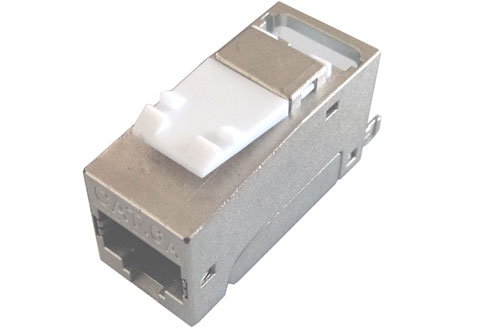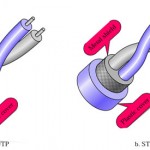Q: What is Category 8 Cabling and who devloped the standard?
A: Category 8 cabling is the latest category of cabling that has been developed to support 25GBASE-T and 40GBASE-T applications developed by the IEEE. The Category 8 standard was developed by the ANSI/TIA-568 standards body, more specifically, the TR42.7 committee. The document that details Category 8 cabling is ANSI/TIA-568-C.2-1, and was published in November 2016 as a standard, therefore Category 8 is no longer in a draft format.
Q: What is unique about Category 8 cabling as opposed to Category 6A cabling or previous balanced twisted pair copper cabling categories?
A: Category 8 cabling has a greater throughput capability; it can support transmission of data up to 40Gbps over balanced twisted pair copper cable. The solution with both shielded and no unshielded solutions. Therefore, careful attention must be paid to shield terminations when installing the solution. All previous categories of balanced twisted pair copper cabling supported a Permanent Link Length of 90meter (295’) and a channel of 100meter (328’). Category 8 has a maximum Permanent Link Length of 24m (78’) and a maximum Channel length of 30meter (100’) when supporting 25Gbps and 40Gbps speeds. Category 8 cabling can support data speeds of 10Gbps and lower at a full 100meter (328’) Channel configuration. When field-testing Category 8 solutions, the installation is tested from 1MHz to 2000MHz, whereas Category 6A balanced twisted pair copper cabling is only field tested from 1MHz to 500MHz.
Q: What connectors does Category 8 cabling use to perform at these higher frequencies?
A: The ANSI/TIA Category 8 solution utilizes an 8 position modular 8 connector (commonly known as RJ45) and was designed to be backward compatible with the existing 8 position modular connectors that are utilized in structured cabling from Category 5e through to Category 6A. This was a key requirement from the active equipment manufacturers to maintain compatibility with the billions of RJ45 connectors in use around the world. The international standards body is following a similar approach, their Class I links are made up of Category 8.1 components, the connectors being backward compatible with the commonly used 8 position modular style (RJ45).
Q: So what else are the international standards bodies doing concerning Category 8?
A: The international standards bodies ISO and IEC have designated two cabling variants to support 25Gbps and 40Gbps; they are Category 8.1 and Category 8.2. As stated earlier, Category 8.1 components are used to construct Class I links. They are backward compatible with the RJ45 connector interface for categories 6A, 6 and 5e as specified in ISO/IEC 11801 and EN 50173. Category 8.2 components are used to construct Class II links. Category 8.2 components are backward compatible with components used to construct Class F and Class FA links. Category 8.2 connector interfaces ARE NOT BACKWARD COMPATIBLE with the RJ45 jacks of existing cabling. The international standards bodies ISO and IEC are expected to publish a new version of ISO/IEC 11801 (Edition 3) during 2017.

Category 8 Solution Types Comparison Chart
Q: How can I make sure my newly installed Category 8 solution will work?
A: The standards bodies have developed new field testing standards to support these new types of Category 8 cabling links. The ANSI/TIA body published in November 2016 a newly revised field test standard. The document is ANSI/TIA-1152-A, and is an update of the older ANSI/TIA-1152 document. The new document covers the testing of Category 8 installations and all the previous Categories of 6A, 6 and 5e, in the one document. The document provides test limits for making the tests and accuracy levels for the field tester carrying out these tests. A field tester for Category 8 testing needs to meet or exceed the Level 2G accuracy requirements. Further, the international standards bodies of ISO and IEC are expected to publish a revised version of ISO/IEC 61935-1, to be Edition 5, later in 2017. This document is currently in draft format and will support the field-testing of the new Class I and Class II links, plus the testing of the existing Class D to Class FA links. This document will also introduce a new accuracy class for a field tester, to be known as Level VI.








